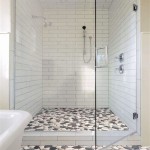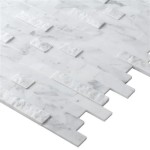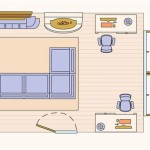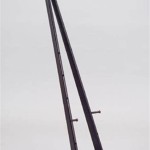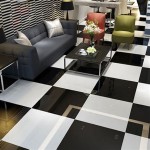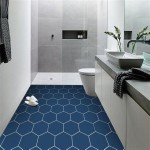Best Ways to Hide Wires on the Floor
Exposed wires on the floor present multiple challenges. They are unsightly, creating a cluttered and unprofessional appearance. More significantly, they pose a tripping hazard, potentially leading to injuries. Furthermore, exposed wires are susceptible to damage from foot traffic, furniture, and cleaning equipment, increasing the risk of electrical malfunctions and fires. Hiding these wires effectively is, therefore, a matter of both aesthetics and safety.
Several methods exist to address this issue, each offering varying degrees of effectiveness, cost, and aesthetic appeal. The selection of the optimal method depends on factors such as the type and number of wires needing concealment, the floor surface, the frequency with which the wires need to be accessed, and the overall design of the space.
This article will explore some of the most effective strategies for concealing wires on the floor, providing detailed insights into their application and suitability for different scenarios. By understanding these methods, individuals and businesses can create safer, more organized, and visually appealing environments.
Cable Management Solutions: A Comprehensive Overview
Cable management solutions provide a structured approach to concealing and organizing wires, allowing for both functionality and aesthetics. These solutions range from simple, adhesive-backed covers to more elaborate floor raceways, each designed to address specific needs and environments.
One common solution is the use of cable concealers, often referred to as cord covers or wire hiders. These are typically made of plastic or metal and feature a channel in which wires can be placed. They are available in various sizes, colors, and shapes, allowing for a degree of customization to match the surrounding décor. Cable concealers can be attached to the floor using adhesive strips or screws, providing a secure and stable method of wire management.
For areas with higher foot traffic or where more wires need to be concealed, floor raceways offer a more robust solution. These are typically larger and more durable than cable concealers, capable of handling a significant volume of wires. Floor raceways often feature a hinged or removable cover, allowing for easy access to the wires for maintenance or modification. They are commonly used in offices, retail spaces, and other commercial environments where a large number of cables need to be managed safely and efficiently.
Another option is the use of cable ties and straps. While these don't completely conceal the wires, they help to bundle them together, reducing the risk of tripping and making the area look tidier. Cable ties are particularly useful for managing multiple cables running in the same direction, preventing them from becoming tangled or separated.
When selecting a cable management solution, it is important to consider the specific requirements of the application. Factors such as the number of wires, the floor surface, and the level of foot traffic should all be taken into account. It is also important to choose a solution that is easy to install and maintain, ensuring that the wires can be accessed quickly and easily when needed.
In addition to these physical solutions, careful planning can also contribute to effective cable management. Whenever possible, position electrical outlets and devices in a way that minimizes the distance that wires need to travel across the floor. This can reduce the amount of wire that needs to be concealed and make the overall management process easier.
Furniture and Décor: Integrating Wire Concealment
Strategic placement of furniture and décor can be an effective way to conceal wires on the floor without relying solely on dedicated cable management solutions. This approach involves integrating wire concealment into the existing design of the space, making it a seamless and aesthetically pleasing solution.
One common technique is to use furniture to obscure the wires. Placing a sofa, desk, or bookcase strategically can effectively hide wires running along the floor. This method is particularly useful for concealing wires that connect devices to outlets or for routing cables from one side of a room to the other.
Area rugs provide another effective means of concealing wires. A rug can be placed over the wires, completely hiding them from view and protecting them from foot traffic. This method is particularly suitable for concealing wires running under furniture or across open areas of the floor. When using area rugs, it is important to ensure that the rug is securely in place to prevent it from slipping and exposing the wires.
Plants and other decorative items can also be used to conceal wires. Placing a potted plant or a decorative screen strategically can effectively hide wires running along the floor. This method is particularly useful for concealing wires in corners or along walls, where the decorative item can blend seamlessly with the surrounding environment.
When using furniture and décor to conceal wires, it is important to ensure that the wires are not subjected to excessive pressure or heat. Avoid placing heavy objects directly on top of the wires, as this can damage the insulation and potentially create a fire hazard. Also, ensure that the wires are not routed near sources of heat, such as radiators or heating vents.
Furthermore, consider the aesthetics of the space. The goal is to conceal the wires in a way that enhances the overall design of the room, rather than detracting from it. Choose furniture and décor that complement the existing style and color scheme, creating a cohesive and visually appealing environment.
The choice of furniture and décor items can also be influenced by the specific type of wires being concealed. For example, thicker cables may require larger pieces of furniture or more substantial decorative items to ensure complete concealment. Conversely, thinner cables can be easily hidden using smaller items, such as small plants or decorative boxes.
DIY Solutions and Creative Alternatives
Beyond commercially available cable management products and strategic use of furniture, a multitude of do-it-yourself (DIY) solutions and creative alternatives can be employed to effectively conceal wires on the floor. These methods often offer cost-effective and personalized approaches to wire management, allowing for greater flexibility and customization.
One popular DIY solution involves creating custom wire covers using materials such as wood, fabric, or even cardboard. These covers can be designed to blend seamlessly with the surrounding décor, providing a discreet and aesthetically pleasing method of wire concealment. For example, a wooden wire cover can be stained or painted to match the color of the floor, effectively disguising it from view.
Another creative alternative is to repurpose everyday items to conceal wires. For example, a length of PVC pipe can be painted or wrapped in fabric to create a custom wire conduit. Similarly, a decorative rope or chain can be used to bundle and conceal wires, adding a touch of visual interest to the space.
Fabric sleeves provide another versatile option for concealing wires. These sleeves are typically made of flexible material and can be easily wrapped around multiple wires, creating a neat and organized bundle. Fabric sleeves are available in a variety of colors and patterns, allowing for customization to match the surrounding décor.
Creative routing of wires can also minimize their visibility. For example, running wires along the baseboards or behind existing architectural features can effectively conceal them from view. This method requires careful planning and attention to detail, but it can result in a clean and uncluttered appearance.
When implementing DIY solutions, it is important to prioritize safety. Ensure that all materials used are non-conductive and fire-resistant. Avoid using materials that could potentially damage the wires or create a fire hazard. Also, ensure that the wires are securely fastened and protected from foot traffic and other potential sources of damage.
DIY solutions also offer the opportunity to personalize the wire concealment process. Individuals can tailor the solutions to their specific needs and preferences, creating unique and aesthetically pleasing methods of wire management. This approach allows for greater creativity and flexibility, resulting in a wire concealment solution that is both functional and visually appealing.
In conclusion, whether relying on commercial cable management solutions, furniture placement, or creative DIY approaches, successful wire concealment requires a strategic approach. Careful planning, attention to detail, and a commitment to safety are crucial for creating a space that is both aesthetically pleasing and free from hazards.

Genius Ways To Hide Wires And Cords Youtube

1 Simple Trick For Hiding Ugly Cords And Wires

How To Hide Cords And Wires 8 Simple Fixes

How To Hide Wires The Home

How To Hide Pesky Lamp Cords Hi Sugarplum

How To Hide Bedside Cords

How To Hide Pesky Lamp Cords Hi Sugarplum

How To Hide Pesky Lamp Cords Hi Sugarplum

How To Hide Power And Cable Cords Dogs Don T Eat

11 Clever Ways To Hide Electrical Wires For A Good Looking Ceiling


